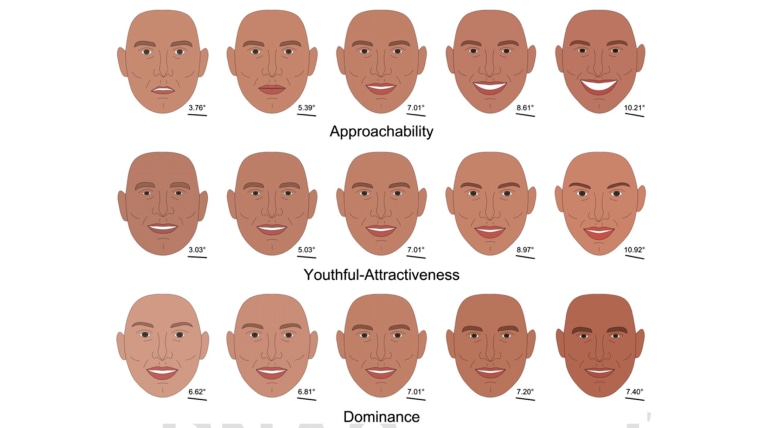There’s a man across the room with big eyes and a warm smile. In an instant, we decide that not only is he hot, but he also seems approachable — based solely on his looks.
We make snap judgments about people all the time, and a new study reinforces previous findings that it takes as little as 100 milliseconds for us to guess what someone’s personality is like based on facial features.

“When we look at a picture of a face we rapidly form judgments about a person’s character, for example, whether they are friendly, trustworthy, or competent. Even though it’s not clear how accurate they are, these first impressions can influence our subsequent behavior,” writes Tom Hartley, an author of the paper and lecturer in psychology at University of York in the United Kingdom, in an email.
Hartley and his colleagues looked at 1,000 different faces and measured physical characteristics, such as facial shape. Then they tried to predict how humans might react to these faces by looking at 65 different details such as eye height, eyebrow width, or lower lip curvature, giving each one a score.
They used those scores to create a computer model that would predict first impressions. Six judges then evaluated illustrated faces using a seven-point scale, where one is the least attractive, for example, and seven is the most attractive.
The computer correctly predicted much of the judges’ first impressions — meaning they could tell what features make someone seem approachable or dominant, for example.
Big eyes have long been associated with attractiveness, says Hartley, and his research indicated the same. The computer models predicted that people with smaller eyes were ranked as less attractive, but the researchers looked at the faces holistically and found that wasn’t always the case.
“It is difficult to nail specific traits to particular subsets of features (because multiple features vary together),” he says.

So while small eyes might seem less hot, if those eyes are paired with a big smile — mouth and jaw influence approachability — that person may seem swoon-worthy. Also, we can make small changes to modify how we look.
“Many of the features that influence predicted ratings in our model are changeable features of the face — related to expression, pose, lighting, camera position, and so on,” Hartley says.
Understanding how we form first impressions can help researchers better comprehend how we form biases.
“It’s a worry that these snap judgments are inaccurate. We may misjudge people based on appearances. For example, is a smiling face really to be trusted?” he says. “Some previous research suggests that there maybe be a ‘kernel of truth’ in some of our first impressions but that we over-generalize so that, for instance, someone with a young-looking face is judged to have immature characteristics.”
Scott Bea, a clinical psychologist in the Center of Behavioral Health at the Cleveland Clinic, who is not associated with the study, said it suggests we may have some “innate standards” that have to do with mating. But he said there’s probably some learned or cultural bias added to that, too.
Frank Farley, a professor of psychology at Temple University in Philadelphia, thinks the research could have implications for how we see depictions of faces — particularly in social media or other places where first impressions count.
"And given how much we all live online ... this line of research could be valuable," he adds.
